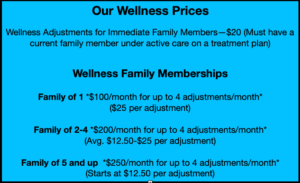Balancing Wellness: Exploring Chiropractic Adjustment

Balancing Wellness: Exploring Chiropractic Adjustment
Chiropractic adjustment, a key component of chiropractic care, plays a significant role in promoting overall wellness. From addressing musculoskeletal issues to enhancing nervous system function, let’s delve into the world of chiropractic adjustment and its impact on holistic health.
Understanding Chiropractic Adjustment: A Holistic Approach
Chiropractic adjustment, also known as spinal manipulation, is a therapeutic procedure performed by chiropractors to address misalignments or subluxations in the spine. This hands-on approach aims to restore proper alignment, alleviate pain, and enhance the body’s natural ability to heal. Chiropractic care adopts a holistic view, recognizing the interconnectedness of the spine, nervous system, and overall health.
Musculoskeletal Alignment: Alleviating Pain and Discomfort
One of the primary goals of chiropractic adjustment is to restore musculoskeletal alignment. Misalignments in the spine can result from various factors, including poor posture, injuries, or repetitive stress. Through precise adjustments, chiropractors work to realign the spine, relieving tension in muscles and joints. This can contribute to the reduction of pain and discomfort associated with musculoskeletal issues.
Nervous System Function: Facilitating Communication
The spine houses the central nervous system, which is responsible for transmitting signals between the brain and the rest of the body. When the spine is misaligned, it may impede the flow of these signals, potentially leading to various health issues. Chiropractic adjustment aims to optimize nervous system function by ensuring proper spinal alignment, facilitating efficient communication between the brain and the body.
Promoting Joint Mobility: Enhancing Range of Motion
Chiropractic adjustments not only address spinal misalignments but also promote joint mobility throughout the body. By targeting specific joints, chiropractors help improve range of motion and flexibility. This can be particularly beneficial for individuals dealing with stiffness, reduced mobility, or conditions affecting joint function.
Pain Management: A Natural and Non-Invasive Approach
Chiropractic care, including adjustments, offers a natural and non-invasive approach to pain management. Rather than relying on medications or invasive procedures, chiropractors use manual techniques to address the root cause of pain. This approach aligns with the body’s innate ability to heal and promotes long-term wellness.
Individualized Treatment Plans: Tailoring Care to Unique Needs
Chiropractors develop individualized treatment plans based on a thorough assessment of each patient’s health and specific concerns. This personalized approach ensures that chiropractic adjustments are tailored to meet the unique needs of each individual. Whether addressing acute injuries, chronic conditions, or overall wellness goals, chiropractic care adapts to the diversity of patient needs.
Preventive Care: Proactive Measures for Long-Term Health
Beyond addressing existing issues, chiropractic adjustment serves as a preventive measure for long-term health. Regular chiropractic care can help maintain spinal alignment, prevent the development of musculoskeletal issues, and contribute to overall well-being. Proactive chiropractic care aligns with the philosophy of promoting health and preventing problems before they arise.
Patient Education: Empowering Individuals for Self-Care
Chiropractors often prioritize patient education as part of their approach. Empowering individuals with knowledge about spinal health, posture, and lifestyle factors enables them to actively participate in their well-being. Through education, patients can make










